#Advantage of Flutter App Development
Explore tagged Tumblr posts
Text
7 Tips That Take Advantage Of Flutter App Development
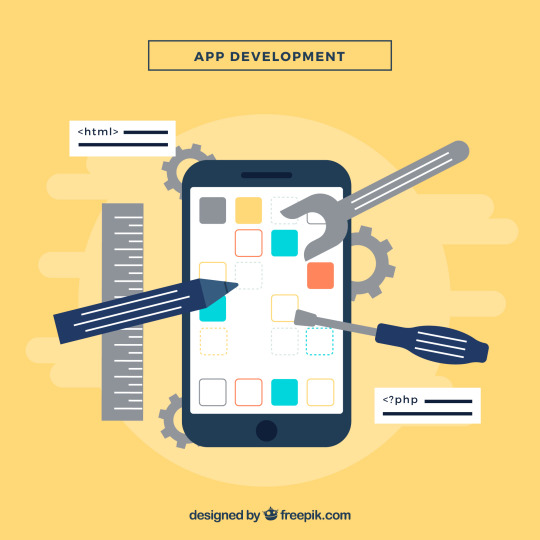
In the ever-evolving world of mobile app development, Flutter has emerged as a game-changing framework, making it easy for developers to create high-quality apps that run seamlessly across both iOS and Android platforms. Flutter’s unique approach to cross-platform development is revolutionizing the way apps are built by delivering a rich user experience with impressive performance. If you’re looking to leverage Flutter to its full potential, here are seven key tips to help you to get the most out of this powerful toolkit.
Understand Flutter's Core Principles
Before diving into Flutter app development, it's essential to understand the core principles that make this framework stand out. Flutter allows developers to write a single codebase that works across both iOS and Android. Its widget-based architecture makes designing flexible user interfaces a breeze and with the Dart programming language at its core, it ensures high performance and minimal delay.
By taking the time to familiarize yourself with the fundamentals of Flutter, such as its widget system, the Dart language and how Flutter's rendering engine works, you'll be better equipped to design and develop robust apps that take advantage of the framework’s full potential.
Use Widgets for Flexible UI Design
One of the main advantages of Flutter is its rich set of pre-built widgets. These widgets allow developers to create highly customizable UIs that can be tailored to meet specific user needs. From simple buttons to complex layouts, Flutter's widget-based system allows for maximum flexibility while maintaining performance.
To maximize the potential of Flutter, embrace custom widgets that meet your app’s unique design requirements. With Flutter's composition model, you can easily combine and nest widgets to create intricate designs that feel native to both iOS and Android, without compromising performance.
Optimize for Performance with Flutter's Hot Reload
Flutter’s hot reload feature is one of its most talked-about capabilities and for a good reason. It allows developers to instantly see the changes made in the code on the emulator or real device without having to restart the entire app. This feature speeds up the development process and allows for more frequent iterations during the development phase.
Take full advantage of hot reload by making frequent updates and fine-tuning your app’s features as you go. It’s perfect for testing out UI changes, experimenting with new ideas and speeding up the overall development process. Dignizant technologies is the best flutter app development company in India, it offers the world’s best IT services and also provides ongoing support.
Integrate Native Features Using Platform Channels
Even though Flutter allows you to create cross-platform apps with a single codebase, sometimes you’ll need to access platform-specific functionality. Flutter makes this easy with Platform Channels, which allow you to write custom code in Kotlin, Java, Swift or Objective-C when needed. This means that even though you’re using a single codebase, you can still take advantage of the unique capabilities of each platform.
For example, if you need to integrate Bluetooth, device sensors or other hardware-specific features, you can use Flutter’s Platform Channels to write native code and connect it to your Flutter app seamlessly.
Leverage Flutter’s Rich Ecosystem of Plugins
Flutter’s ecosystem is home to thousands of community-driven plugins that can help you quickly implement features like camera access, geolocation, push notifications and more. These plugins, available on Flutter’s package repository, save time and effort, allowing you to integrate third-party services and tools without reinventing the wheel.
When developing your app, always check if there’s an existing plugin that can provide the functionality you need. This will not only speed up development but also ensure that your app leverages tried-and-tested solutions.
Test Your App on Multiple Devices
Cross-platform development is one of Flutter’s biggest advantages, but it’s important to remember that iOS and Android devices come in many shapes and sizes. Flutter allows you to preview your app on different screen resolutions and orientations, but testing on real devices is crucial to ensure a flawless user experience.
To take full advantage of Flutter, make sure to test your app thoroughly on a range of devices. Flutter's flutter drive command can help to automate integration testing and check that your app works seamlessly across multiple platforms.
Stay Up-to-Date with Flutter's Continuous Improvements
Flutter is constantly evolving, with Google regularly releasing new updates, improvements and bug fixes. To keep your app in top shape and take advantage of the latest features, always stay up-to-date with the latest version of Flutter.
By keeping track of updates and adopting new features as they become available, you can ensure that your app remains modern, performant and compatible with the latest devices and operating systems. Whether it’s new widgets, performance improvements or updates to the Flutter engine, these updates often come with enhancements that can improve the overall user experience of your app.
Conclusion
In conclusion, Flutter app development offers a powerful and efficient way to build high-quality apps for both iOS and Android platforms. By understanding its core principles, utilizing its flexible widget system and taking advantage of features like hot reload and platform channels, developers can optimize their app development process. With a rich ecosystem of plugins and access to continuous updates, Flutter enables developers to create exceptional, cross-platform apps that stand out in the market.
#Flutter App Development Company In India#Flutter Application Development Company in India#Best Flutter App Development Company in India#Flutter Mobile App Development Company in India#Flutter App Development Company India#Top Flutter App Development Company in India#Flutter App Development Companies in India#Flutter App Development Services In India#Best Flutter App Development Companies in India#Top Flutter App Development Companies in India#Best Flutter App Development Company#Best Flutter App Development Agency#Best Flutter App Development Services#Advantage of Flutter App Development
0 notes
Text
FlutterFlow: The Right Platform to Embark Your Startup Journey

In the cut-throat competitive landscape of businesses, time to market, technology used, and profits generated are the cornerstones of defining success. The capability to implement advanced technology to innovate your business application and execute it successfully gives you a competitive edge. Traditional app development, with its daunting coding requirements and long timelines, often poses challenges for startups with an extended time to market.
Enters, low-code platforms that offer a simple solution to accelerate development without compromising on development quality. One of such platforms gaining popularity is, FlutterFlow.
Let’s explore why FlutterFlow is loved by so many startups and what it brings to the table. Before we get into the nitty-gritty of FlutterFlow, let’s dig in a little deeper to understand low-code development.
What Is Low Code Development?
Low code development refers to software development environments that let developers build applications through graphical user interfaces rather than traditional codes. The platforms reduce the amount of manual coding, which results in faster development lifecycles and easier iterations.
Benefits Of Low-Code Platforms

Rapid development and deployment speed.
Resource management with smaller development teams.
Better solutions with less coding needs
Easy to use by non-technical users, making it easier for them to contribute to the app development process.
Much easier to make changes and updates.
Thus with the ease and accessibility to even non-technical users, Low Code development is helping startups create professional applications on a budget. Some of the popular low-code platforms are Appian, Creatio, Outsystems, FlutterFlow, etc.
FlutterFlow gets a lead over others as it is taking low code development to new heights. Let’s now explore what makes FlutterFlow a perfect platform for your startup.
What is FlutterFlow?
FlutterFlow is built on Google’s Flutter framework, designed for developing cross-platform applications for Android, iOS, and the web. It offers a visual design interface, allowing users to plan app layouts effortlessly through simple drag-and-drop capability. FlutterFlow helps real-time collaboration, making it best for teams working together on a development project.
With an easy-to-use interface, no technical skills, and a strong framework to back it, FlutterFlow has been gaining popularity since it was conceived. Whether you are a startup or a small-scale business, if you want to create a mobile application that resonates with your audience, then, choose the FlutterFlow platform and let things flow.
Why FlutterFlow Is Perfect for Startups?
FlutterFlow is taking low code development to new heights by offering a visual development environment where users can build the solutions they want without compromising on app feature quality.
FlutterFlow basically incorporates and promotes best practices for software development. The platform streamlines complex IDE tasks into an intuitive UI, making developer interactions easier. To use the platform one needs basic training, thus even non-developers get into the basics of core app development concepts.
FlutterFlow entered the market with a vision to go from low code development to visual development. Here’s how the team is planning to achieve their goals:
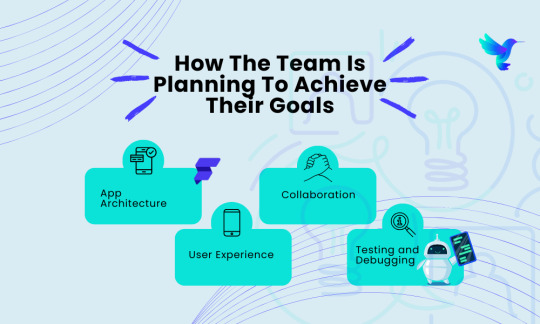
App Architecture: The codes generated using FlutterFlow meet the standards set by Flutter and Dart. They abide by the standard app market, thus helping users with a credible app development solution.
Testing and Debugging: The developers can simply test and debug the applications by running, testing, and resolving issues. This allows startups to enter the market with a flawless and highly rewarding application.
Collaboration: With modular development, smart version controls, and comprehensive access management, users can collaborate easily for better results.
User Experience: With an easy-to-explore interface, edit on clicks, ensure consistency, incorporate AI where possible, and users can switch between code and GUI.
FlutterFlow offers startups an environment where they can cross-operate, collaborate, and discuss their problems. The platform is conceived to make development easier, more convenient, and accessible for non-tech people also, who can easily make their contribution to the web now!
Some of the other advantages of the platform are:
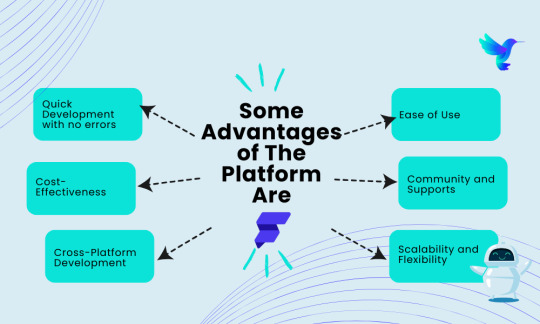
1. Quick Development With No Errors
The cheat code to making the best of your business is, to enter the market ASAP.
One of the most significant benefits of FlutterFlow is the speed at which the projects may develop. The platform’s visual interface and pre-built elements allow for speedy prototyping and development. Startups can fast-build minimum viable products (MVPs) to check thoughts in the marketplace without making a heavy investment in development sources.
Thus, you can create a product faster, take it to the market, and get feedback easily. We understand not every product works well on the first go, but with FlutterFlow you get the ease of making iterations and offering your audience a solution they’d appreciate.
2. Cost-Effectiveness
Most startups run on budget constraints. FlutterFlow helps reduce investing in large teams of seasoned developers. The platform’s drag-and-drop capability and pre-built templates lessen the quantity of custom code required, which translates to lower support and maintenance fees. A developer with lesser experience and understanding of the development languages can also, easily create an app here making it easier for you to invest your funds in other business verticals too.
3. Cross-Platform Development
FlutterFlow’s foundation lies at the Flutter framework which guarantees that applications are cross-platform by default. Thus by picking FlutterFlow startups can create and deploy applications to iOS, Android, and net platforms simultaneously. This cross-platform functionality is crucial for startups looking to maximize their target audience and digital presence without incurring the expenses and complexities of keeping separate codebases for specific platforms.
4. Ease Of Use
FlutterFlow is designed to be user-friendly, making it accessible to both skilled app developers and those with limited coding exposure. This democratization of app development means that non-technical founders and team members can contribute to the development procedure. FlutterFlow also gives tremendous documentation and tutorials, further decreasing the barrier to entry.
Because it is easy to use, the startup founders can make changes to the product as they want.
5. Scalability And Flexibility
Despite being a low-code platform, FlutterFlow gives massive flexibility. Users can add custom code to increase the functionality of their programs, making sure that they are now not confined with the aid of the platform’s built-in features. FlutterFlow additionally integrates seamlessly with backend services like Firebase and Supabase, bearing in mind robust and scalable backend solutions.
6. Community And Support
Being part of the Flutter ecosystem, FlutterFlow advantages from an active and supportive community. This network affords a wealth of assets, tutorials, and discussions that could assist startups conquer challenges and make the most of the platform. Additionally, FlutterFlow is continually evolving, with new capabilities and improvements being brought often based on user comments.
New users can always connect with the community for any assistance and customization thus creating a growth-oriented and learning ecosystem.
These are some of the most popular reasons why FlutterFlow is one of the most prominent low-code platforms for startups. So, if you are aiming to start your entrepreneurial journey and aren’t sure how to start without investing much in development, FlutterFlow is your trusted development partner.
Addressing Common Concerns of Using FlutterFlow
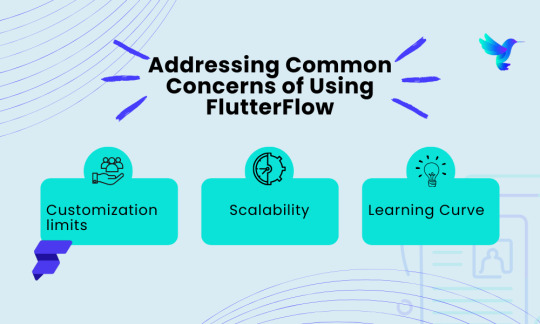
FlutterFlow may offer a great advantage for startups and businesses, but it does come with some limitations. Let’s explore the common concerns when working on the platform.
Customization Limits
The most common and often-faced concern with low-code platforms is the potential difficulty of customization. However, FlutterFlow mitigates this with the aid of custom code integration. This ensures that whilst you can enjoy the speed and efficiency of low-code development, you still have the flexibility to put into effect custom functions as wanted.
Scalability
Another concern is scalability. FlutterFlow is designed to handle significant user load and great data volumes through its integration with a powerful backend. Startups can hopefully scale their packages as their customer base expands, knowing that the platform is designed and developed to meet their business needs.
Startups with a limited user base can use the capabilities of FlutterFlow for future preparedness.
Learning Curve
While FlutterFlow is user-friendly, there can still be a strong learning curve, specifically for those new to app development. However, the considerable assets available, together with documentation, tutorials, and network help, assist mitigate this challenge.
Startups can always seek assistance from other development agencies experienced in FlutterFlow to boost learning and make sure first-class practices are followed. With little time and dedication, one can excel in their skills and implement them to build innovative products for the future.
Conclusion
FlutterFlow represents a tremendous advancement in the realm of low-code development systems, particularly for startups. Its combination of speed, value-effectiveness, ease of use, and flexibility makes it a super choice for early-stage businesses seeking to deliver their thoughts to the marketplace. By leveraging FlutterFlow, startups can reduce development time and fees, build cross-platform applications, and remain agile in a competitive landscape.
For startups and small-scale organizations trying to maximize their assets and boost their development process, FlutterFlow offers a compelling solution that bridges the gap between rapid prototyping and strong, scalable app development. As the platform continues to evolve and improve, it’s far poised to end up a good extra effective device for startups aiming to innovate and be triumphant in the virtual age.
#FlutterFlow#Custom App Development#FlutterFlow Startup businesses#Challenges for startups businesses#Low Code Development#graphical user interfaces#Benefits Of Low-Code Platforms#Google’s Flutter framework#cross-platform applications#Hire Flutter Developers#software development#advantage for startups and businesses
0 notes
Text
How Flutter’s Features Enhance Your App: 7 Key Benefits
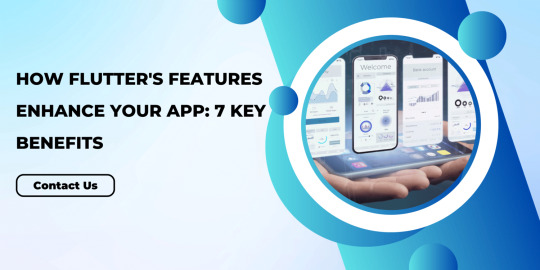
Nowadays In the digital world, developing an app that stands out is crucial. One tool that’s been gaining significant attention is Flutter. But what makes Flutter so special? Let’s dive into how Flutter’s features can enhance your app, highlighting seven key benefits that can make a difference.
1. Single Codebase Advantage
One of the standout features of Flutter is its single codebase advantage. Imagine being able to write your app’s code once and have it run smoothly on both iOS and Android platforms. This is not just a dream; it’s a reality with Flutter. This saves a tremendous amount of time and effort, allowing developers to focus more on enhancing the app rather than rewriting code for different platforms.
2. Fast Development with Hot Reload
Have you ever wished for a magic wand that could instantly show the results of your code changes? Flutter’s hot reload feature is just that magic wand. This feature lets developers instantly view their changes without the need to restart the entire application. This speeds up the development process significantly, making debugging and UI tweaks a breeze.
3. Beautiful, Customizable UI
Flutter is known for its ability to create stunning and highly customizable user interfaces. With a rich set of pre-designed widgets and the flexibility to create custom ones, Flutter ensures that your app doesn’t just perform well but also looks amazing. The layered architecture of Flutter allows for full customization, right from the design to the behavior of each widget.
4. High Performance
Performance is a critical aspect of any app. Flutter applications are renowned for their high performance because they are compiled directly into native ARM code. This ensures that the app runs smoothly and efficiently, offering users a seamless experience. Whether it’s handling complex animations or rendering multiple elements on the screen, Flutter ensures everything works flawlessly.
5. Strong Community Support
No developer is an island. The strength of a development tool often lies in the community behind it, and Flutter boasts a vibrant and supportive community. From extensive documentation to numerous forums and user groups, you’ll find a wealth of resources and support. This makes troubleshooting and finding best practices easier, ensuring your app development journey is smooth and supported.
6. Rich Set of Widgets
Widgets form the core components of any Flutter app. Flutter comes with a rich set of pre-designed widgets that cater to almost every need. Whether you need simple buttons and sliders or more complex elements like grids and lists, Flutter has you covered. These widgets are not only functional but also customizable, allowing you to tailor them to your app’s specific requirements.
7. Cost-Effectiveness
Developing an app can be expensive, but Flutter helps in reducing costs significantly. By allowing a single codebase to be used across multiple platforms, development time and resources are saved. Moreover, the lower maintenance costs and the availability of free resources from the Flutter community contribute to overall cost savings. For startups and small businesses, this cost-effectiveness is a game-changer.
Conclusion
In conclusion, Flutter app development offers numerous benefits that can greatly enhance your app. From its single codebase and fast development process to its beautiful UI and high performance, Flutter provides a comprehensive solution for building cross-platform apps. The strong community support, rich set of widgets, and cost-effectiveness further add to its appeal, making Flutter an ideal choice for app developers.
FAQs
What is the main advantage of using Flutter for app development?
The main advantage of using Flutter is its single codebase that works across both iOS and Android platforms, saving time and resources.
How does Flutter’s hot reload feature benefit developers?
Flutter’s hot reload feature allows developers to view updates instantly without restarting the application, significantly speeding up the development process.
Can Flutter create high-performance apps?
Yes, Flutter compiles directly to native ARM code, ensuring high performance and smooth user experiences.
Is Flutter suitable for small businesses and startups?
Absolutely. Flutter’s cost-effectiveness, due to its single codebase and lower maintenance costs, makes it ideal for small businesses and startups.
Where can I access support and resources for Flutter development?
Flutter has a strong community with extensive documentation, forums, and user groups where you can find support and resources for your development needs
#Flutter App Benefits#Enhance Your App with Flutter#Key Features of Flutter#Flutter Development Advantages#Boost App Performance with Flutter#Why Choose Flutter for Apps#Flutter for Mobile Development#Top Flutter Features#Flutter App Enhancement#Benefits of Using Flutter
0 notes
Text
In 2024, Savvient Technologies advocates for Flutter, citing its rapid development, seamless cross-platform compatibility, and rich widget set. Embrace Flutter for cost-effective, high-performance app development with streamlined maintenance, revolutionizing your mobile experience.
1 note
·
View note
Text
Here We mentioned all Pros and cons for Flutter App Development. Click here to know in details.
1 note
·
View note
Text
Cross-Platform App Development Services: Breaking Barriers and Expanding Reach

In today's digital era, mobile applications have become an integral part of our lives. Whether it's for social networking, e-commerce, or productivity, mobile apps have revolutionized the way we interact with technology. However, developing an app that can cater to the diverse needs of users across different platforms can be a daunting task for businesses. This is where cross-platform app development services come into play.
What is Cross-Platform App Development?
Cross-platform app development is the process of building mobile applications that can run on multiple operating systems, such as iOS and Android, using a single codebase. Unlike native app development, which requires separate codebases for each platform, cross-platform development allows businesses to save time, resources, and effort by creating a single app that works across various platforms.
The Advantages of Cross-Platform App Development:
1. Cost-Effectiveness: Developing separate apps for different platforms can be expensive. Cross-platform development enables businesses to significantly reduce costs by reusing a single codebase across multiple platforms. This approach also minimizes the need for hiring platform-specific developers, resulting in further cost savings.
2. Time Efficiency: Cross-platform frameworks and tools provide developers with the ability to write code once and deploy it on multiple platforms. This drastically reduces the time required for development, testing, and deployment, allowing businesses to bring their apps to market faster and gain a competitive edge.
3. Consistent User Experience: With cross-platform development, businesses can ensure a consistent user experience across different platforms. By using a single codebase, developers can maintain design and functionality consistency, resulting in a seamless experience for users, regardless of the device or operating system they use.
4. Wider Market Reach: By developing a cross-platform app, businesses can reach a broader audience as their application can run on various devices and operating systems. This expanded market reach enhances brand visibility and increases the potential user base, leading to greater customer acquisition and revenue generation.
5. Easy Maintenance: Updating and maintaining separate codebases for different platforms can be challenging. Cross-platform development simplifies the maintenance process as changes and updates can be applied to a single codebase, ensuring consistency and reducing the chances of introducing bugs or inconsistencies across platforms.
Choosing the Right Cross-Platform Development Framework:
When it comes to cross-platform app development, there are several frameworks available, each with its unique features and capabilities. The choice of framework depends on various factors such as project requirements, target audience, performance needs, and developer expertise. Some popular cross-platform frameworks include React Native, Flutter, Xamarin, and Ionic.
Partnering with Cross-Platform App Development Services:
While cross-platform app development offers numerous benefits, it requires technical expertise and experience to leverage the full potential of these frameworks. This is where partnering with cross-platform app development services can make a significant difference.
Professional app development services specializing in cross-platform development have the necessary skills, knowledge, and resources to create high-quality, feature-rich applications that can run seamlessly across multiple platforms. These services understand the intricacies of various frameworks, ensuring optimal performance and user experience.
Additionally, cross-platform app development services keep up with the latest industry trends and advancements, allowing businesses to incorporate cutting-edge features and technologies into their applications. They also provide ongoing support, maintenance, and updates, ensuring that the app remains up-to-date and compatible with the latest devices and operating system versions.
Conclusion:
Cross-platform app development services have emerged as a game-changer for businesses looking to develop mobile applications that can reach a wider audience while optimizing costs and development time. By leveraging the benefits of cross-platform development, businesses can break barriers, expand their reach, and deliver engaging experiences to users across multiple platforms.
Whether you are a startup or an established enterprise, partnering with cross-platform app development services can unlock new opportunities and drive your business forward in the ever-evolving mobile landscape.
Source
#AppDevelopment#WebDevelopment#MobileApps#WebApps#SoftwareDevelopment#UIUXDesign#MobileDevelopment#WebDesign#CodeLife#TechSolutions#AppDesign#MobileTech#WebDev#DigitalTransformation#ResponsiveDesign#Innovation#TechIndustry#AppSolutions#WebSolutions#CodeNerds
23 notes
·
View notes
Text
Exploring the Difference Between Web Development and App Development

Hey there, tech enthusiasts! So, you've heard about web development and app development, but you're not quite sure what sets them apart? Don't worry, I'll break it down for you in simple terms!
First things first, what exactly is web development? Well, think of it like building a house on the internet! Web development involves creating websites or web applications that can be accessed through a web browser, like Google Chrome or Safari. It's all about designing, building, and maintaining websites that people can visit and interact with online.
Now, let's talk about app development. This is like building a cozy little home on your smartphone or tablet! App development involves creating mobile applications that are installed directly onto your device, like games, social media apps, or productivity tools. It's all about designing, building, and maintaining applications that people can download and use on their mobile devices.
So, what's the difference between web development and app development? Here are a few key distinctions:
Platform: The biggest difference between web development and app development is the platform they're built for. Web app development services focuses on creating websites or web applications that are accessed through a web browser on desktop computers or mobile devices. App development, on the other hand, focuses on creating mobile applications that are installed directly onto a device and accessed through an icon on the home screen.
Technology: Web development typically involves technologies like HTML, CSS, and JavaScript for creating the front end (what users see and interact with) and languages like PHP, Python, or Node.js for creating the back end (the server-side logic). App development, on the other hand, often involves languages like Java or Kotlin for Android development, Swift or Objective-C for iOS development, or frameworks like React Native or Flutter for cross-platform development.
Distribution: Web applications are usually accessible to anyone with an internet connection and can be accessed through a web browser without the need for installation. Mobile applications, on the other hand, need to be downloaded and installed onto a device from an app store like the Apple App Store or Google Play Store.
User Experience: The user experience of web applications and mobile applications can be quite different. Web applications are designed to work across different devices and screen sizes, so they often have a responsive design that adapts to fit the user's device. Mobile applications, on the other hand, are specifically designed for use on mobile devices and can take advantage of features like touch screens, GPS, and push notifications.
In conclusion, while web development and app development share some similarities, such as creating digital experiences for users, they also have key differences in terms of platform, technology, distribution, and user experience. Whether you're interested in building websites or mobile applications, both fields offer exciting opportunities to unleash your creativity and make an impact in the digital world!
2 notes
·
View notes
Text
What is the Best Mobile Application Development Framework, Flutter, or React Native?

As an ever-increasing number of individuals are accepting modernized innovation in technology, the interest in mobile applications has expanded step by step.
Hybrid mobile frameworks are acquiring prevalence. The presence of React Native (RN) in 2015 opened astounding chances to assemble applications for iOS and Android utilizing one codebase. Thus, it permitted us to solve two problems at once and not rework a similar code two times. Large firms like UberEats, Discord, and Facebook moved to React Native, a powerful promotion.
Google didn’t stand separated; they saw the immense popularity of RN. Subsequently, Google presented an alpha version of its hybrid framework called Flutter in 2017. Flutter likewise turned into an extremely famous framework. The improvement of a framework like React Native prompts confusion over what to decide for hybrid mobile app development:
React Native or Flutter? Nonetheless, there’s another significant inquiry which you ought to choose before this: Is it better to develop a hybrid or native mobile apps?
Both cross- platform application has its upsides and downsides and prevalence
Flutter
Flutter is an open-source mobile application development Software tool sh that has design & created by Google. It had its main release in May 2017. Flutter has composed into the C, C++, Dart, and Skia Graphics Engine. Flags have been created by Google. Creating Android and Android applications is additionally utilized. The SDK is free and sent off as a source designer to explore and make strong, powerful applications around.
Why choose to Flutter for Android and iOS mobile application development?
Cross-platform
Hot Reload
High compatibility with programming languages
Faster and improved native performance
Appealing UI
Accessible SDKs and native features
The functional and reactive framework
React Native
React Native is a structural framework made by Facebook that permits us to foster local mobile applications for iOS and Android with a solitary JavaScript codebase.
React native is a genuine mobile application, additionally open-source application development system which is created by Facebook. Rouse that ideas should be created on the web for mobile development. Reactive native is accustomed to making iOS and Android applications. IT was delivered in March 2015. In such a manner, JavaScript is created. Notwithstanding, the application appearance is by all accounts a native app.
Why choose to React Native forAndroid and iOS app development?
Seamless and synchronous API
Seamless and synchronous API
Quick performance
Greater reach
Which is Better: Flutter or React Native?
Flutter ranks positions higher with 75.4% and React Native likewise cut with 62.5% among most cherished frameworks.
Both Flutter and React Native are famous and exceptionally used by the application developers for the development of cross-platform applications. Every single one of them has their one-of-a-kind upsides and downsides, stability in development, speed, and much more.
Flutter is a new framework, and it is expanding and growing slowly and gradually. Compared to Flutter, React Native is in the industry for a long time now. Hence, it is mature enough that leading brands have experienced its benefits of it. While Flutter is yet to have such strong case studies.
The choice of the right framework can be best done based on your mobile app requirements.
Flutter is new in the framework market, and it is extending and developing gradually and slowly. Contrasted with Flutter, React Native is in the business for quite a while now. Thus, mature an adequate number of leading brands have encountered its advantages of it. While Flutter is yet to have areas of strength for such investigations study.
#marketing#socialmediamarketing#digitalmarketing#branding#contentstrategy#jexcore#marketingagency#marketingdigital#marketingservices#digital marketing
2 notes
·
View notes
Text
The Practical Guide to IT Outsourcing: How it Advances Startups and Big Businesses

Let’s face it. No one wants to juggle code when they should be building a company.
The constant need to innovate while keeping costs in check. Whether you’re a scrappy startup or a well-oiled enterprise, IT outsourcing isn’t just a lifeline—it’s a secret weapon. And with the rise of specialized firms offering everything from cloud solutions to dedicated development teams, it’s easier than ever to tap into global talent without much trouble. Whether you're a fast-growing startup racing the clock to market or a large enterprise balancing budgets, compliance, and customers, outsourcing IT isn't just a cost-saving tactic anymore. It's a growth strategy. A smart one.
Outsourcing isn’t just about cutting costs. It’s about agility, knowledge, and focused attention. Startups, drowning in a sea of to-dos, can’t afford to create everything internally. And in the case of large enterprises, they're often weighed down by legacy systems and bureaucratic inertia. Outsourcing bridges these gaps and allows startups to focus on their core competencies and innovate faster, while large enterprises can modernize their systems and processes without the burden of in-house development. In today's fast-paced business environment, outsourcing IT is not just a strategic advantage but a necessity for sustainable growth and success.
And when you work with the right outsourcing partner; one that quietly powers backend infrastructure or builds cloud-native apps for global clients; you're not just outsourcing. You're investing in momentum.
Startups: When Speed Is Your Superpower
Startups develop on speed, but speed can be a double-edged sword. Too fast, and you risk breaking under pressure. You'll be outpaced if you move too slowly. So how do you maintain speed without hitting the burnout wall?
This is where outsourcing IT comes into play. Startups get:
Fast turnarounds: When time to market is everything, having skilled and qualified developers on call means you skip the hiring marathon. With 1.2 million software engineering jobs going unfilled in the U.S. by 2026, waiting to hire in-house is a luxury startups don’t have. Outsourcing taps into global talent instantly.
Plug-and-play scalability: Scale up or down without playing cat-and-mouse games with the internal team. You don’t have to pay for salaries, benefits, office space, or fancy equipment. Some studies even suggest you could save up to 70%!
Access to real talent: Niche expertise is just a contract away. Reputable outsourcing providers offer vetted, experienced, and skilled developers trained in technologies that actually matter—from PHP and Python to Flutter and ReactJS.
Honestly, for startups, outsourcing isn’t optional—it’s essential for survival.
Established Enterprises: Stay Nimble
If you’re running a large business, you’re probably already facing complex challenges like legacy issues, innovation fatigue, bloated budgets, compliance headaches, and the dreaded “we’ve always done it this way” mindset.
Adding internal developers for every new project? It gets expensive. Very fast. Outsourcing can help you:
Slash operational costs: No need for added office space, equipment, or administration expenses. Outsourcing lets you switch to more flexible, usage-based pricing.
Mitigate risks: Reputable vendors don’t just code; their workflows are built around risk management, compliance, and QA. Outsourcing providers often have efficient processes in place that reduce downtime and increase productivity.
Stay competitive: With scalable solutions and on-demand cloud infrastructure management, you adapt faster than the market shifts. Companies like CODEPOINT Softwares offer expert teams that help enterprises keep pace with tech advancements.
Let’s say you want to launch a custom CRM or upgrade your entire backend. Hiring an in-house team could take months. But if you outsource it, that decision alone makes the job half done.
But Wait, Is Outsourcing All Sunshine and Rainbows?
Not exactly. There are some legitimate concerns to keep in mind with outsourcing:
Communication hiccups: Time zones, language barriers, and many other factors can make communication tricky. But regular updates and clear documentation keep everyone aligned.
Hidden costs: Sometimes the external outsourcing partner might surprise you with hidden charges. Always look for providers with a transparent record.
Loss of control: When you're handing over sensitive company data, choose a trustworthy vendor with strong security measures to ensure protection and control.
But you know what? These are avoidable. With transparent reporting, secured partnerships, and regular updates through platforms like Skype or email, experienced outsourcing firms handle all the scary bits for you. You stay in the loop. Your project stays on track.
What to Look For When Outsourcing
Not all outsourcing partners are created equal. So, how do you pick the right outsourcing company? Here are a few tips:
Define Your Needs: Are you building an app or migrating to the cloud? Be specific about what you need help with.
Do Your Homework: Check case studies, read testimonials, and verify that the vendor has the technical expertise you need.
Test the Waters: Start with a small project to gauge performance before committing to a larger engagement.
Always try to leverage time zone advantages, cost efficiency, and the brilliant minds who can navigate you through troubled waters.
It’s Not Outsourcing. It’s Outsmarting.
Outsourcing is no longer a Plan B. It’s a strategic way to do more, faster, and smarter. IT outsourcing is a powerful tool. It can help startups grow faster, and it can help established enterprises stay efficient and competitive.
Whether you’re a startup racing against the clock or an enterprise streamlining ops, the right partner offers the blend of skill and flexibility that’s hard to find in-house.
Great outsourcing partners are already building things that work. Maybe it’s time you let them build something for you, too.
1 note
·
View note
Text
App development is one of the most rapidly growing industries. In these rapid times, Flutter can be a life-savior. But just like everything, it has its pros and cons. Let’s understand it in detail and determine if it’s the right fit for your business. Flutter: An Introduction Google’s Flutter is an open-source UI software development toolkit. It enables developers to create high-quality native interfaces for mobile, web, and desktop from a single codebase. It uses the Dart programming language to provide a rich set of customizable widgets, making it easier to create visually appealing applications. Its standout feature, “hot reload,” allows for real-time code updates, which speed up iteration cycles and promote efficient development. Flutter continues to gain traction in the tech industry, revolutionizing cross-platform app development. This is done by combining the benefits of native performance with the simplicity of a unified codebase, thanks to strong community backing and continuous enhancements. Advantages of Flutter for App Development Cross Platform Development Flutter development allows for concurrent development for iOS and Android, reducing development time and costs by using a single codebase. Thus ensuring consistency across platforms and reducing maintenance efforts. Hot Reload Feature This unique feature allows developers to see code changes instantly, providing real-time updates to the app interface, speeding up the development process, and facilitating quick bug fixes. Single Codebase Developers can use Flutter to write code once and deploy it across multiple platforms. Thus eliminating the need for separate codebases and resulting in more efficient maintenance and synchronization between different versions. Rich and Customizable Widgets Flutter provides a large library of widgets that can be easily customized, allowing developers to create visually appealing and unique user interfaces that improve user experience and app aesthetics. Faster Development Time Flutter’s hot reload feature, reusable widgets, and single codebase significantly reduce development time, allowing for faster iterations, faster prototyping, and faster time-to-market for apps. Strong Community Support Flutter has a vibrant and active developer community that provides plenty of resources, tutorials, and support. Thus fostering collaboration, innovation, and the resolution of challenges encountered during app development. To learn more about app development using Flutter, you can check out this article. Challenges while using Flutter for App Development Large File Sizes Due to bundled libraries, Flutter apps may have larger file sizes. Thus potentially impacting app download and installation times, necessitating optimization strategies to mitigate user inconvenience and storage constraints. Limited Native Functionality Some complex native functionalities may be difficult to implement directly in Flutter. In turn, this necessitates workarounds or platform-specific coding. This increases development complexity and compromises app performance. Learning Curve for Developers Adopting Flutter may necessitate time for developers who are unfamiliar with Dart or widget-based frameworks. This is because it will require dedicated learning efforts to grasp its concepts, architecture, and best practices. Performance Issues in Complex Apps Flutter may encounter performance bottlenecks in more complex applications, particularly when dealing with large amounts of data or intricate UI elements. Careful optimization then becomes crucial to ensure smooth app performance. Third-Party Compatability Integrating certain third-party libraries or functionalities within Flutter may cause compatibility issues. Ultimately, it might require developers to find alternative solutions or contribute to improving compatibility for a seamless app experience.
0 notes
Text
Find the Top 5 Latest Mobile App Development Software in 2025 — Expert Picks by TimD — Tim Digital
Choosing the right mobile app development software in 2025 is more than just a technical decision — it’s a strategic advantage. With the growing pressure to deliver faster, reduce bugs, and maintain UI consistency across devices, developers and companies alike are re-evaluating their tech stacks.

Why the Right Mobile Development Stack Makes All the Difference
Many development teams struggle not because of a lack of skill but due to poor tooling and platform fragmentation. Common issues include:
Too much time spent on duplicate codebases
Difficulty managing bugs across platforms
Low design consistency between iOS and Android versions
A better stack can lead to faster time-to-market, fewer bugs, and improved collaboration across teams.
Snapshot: 5 Game-Changing Mobile Development Frameworks
In 2025, five standout mobile development frameworks are leading the way.
Flutter, backed by Google, offers hot reload, expressive visuals, and UI consistency — making it ideal for cross-platform UI precision. React Native, developed by Meta, is JS/TS-based and features fast refresh and a robust plugin ecosystem, best suited for teams transitioning from web to mobile. .NET MAUI, Microsoft’s enterprise-grade solution, combines native speed with C# and deep integration into the Microsoft ecosystem, perfect for unified experiences across mobile and desktop. For Apple-centric development, Swift stands out with hardware-level API access and deep iOS integration, delivering high-performance, iOS-only applications. Lastly, Kotlin, Google’s preferred language for Android, is known for its concise syntax and Jetpack Compose support, making it the go-to choice for scalable, Android-first projects.
1. Flutter — Deliver Visually Consistent Cross-Platform Apps
Backed by Google, Flutter continues to lead the way for teams needing high-performance mobile apps from a single Dart codebase. With its built-in Skia rendering engine, it doesn’t rely on native UI components — giving you full control over visuals on both Android and iOS.
Why It’s a Top Pick:
Rapid UI iteration with Hot Reload
Mature ecosystem on pub.dev
Excellent for MVPs, startups, and custom-designed apps
2. React Native — A Natural Fit for Web Development Teams
Created by Meta, React Native allows JavaScript developers to build native mobile apps without switching tech stacks. It’s ideal for web teams transitioning into mobile, especially with tools like Expo simplifying builds.
Best Use Cases:
Fast deployment using React-based components
Shared codebase between web and mobile
Lightweight apps needing high iteration cycles
3. .NET MAUI — Microsoft’s Unified Solution for Desktop and Mobile
.NET MAUI enables enterprise-grade cross-platform development using C# and XAML. It compiles to native code, ensuring performance, while simplifying development for organizations already using Microsoft tools and Azure.
Why Enterprises Prefer It:
Strong support for desktop/mobile hybrid builds
Full access to native APIs
Streamlined with Visual Studio and Azure DevOps
4. Swift — The Gold Standard for Native iOS App Development
Developed by Apple, Swift is the go-to for building fluid, fast, and fully integrated iOS apps. Combined with SwiftUI or UIKit, it’s the most reliable way to deliver App Store-ready applications with deep device capabilities.
Ideal For:
iOS-only apps
Products that leverage ARKit, Core ML, or HealthKit
Premium apps requiring pixel-perfect animations
5. Kotlin — For Next-Level Native Android Performance
Endorsed by Google and developed by JetBrains, Kotlin is a modern language designed for Android. It brings null safety, concise syntax, and coroutine-based async capabilities, making it a favorite among Android developers in 2025.
Where It Shines:
Clean migration path from Java
Jetpack Compose support for UI innovation
Great for complex, scalable Android apps
Native vs. Cross-Platform vs. Hybrid — What Should You Choose?
When it comes to choosing the right development approach, your decision should align with your product roadmap, team capabilities, and performance expectations. Native development offers the best UX quality and strong scalability, making it ideal for performance-intensive apps — but it comes with higher maintenance needs and moderate development speed. Cross-platform frameworks like Flutter and React Native strike a balance by allowing faster development, lower maintenance, and good scalability, although UX quality may slightly lag behind native builds. On the other hand, hybrid frameworks such as Ionic are fast to develop and easy to maintain but offer limited user experience and only moderate scalability — making them suitable for basic MVPs or internal tools where performance is not critical.
Expert Tip: If your app relies on camera, AR, or sensors — go native. For time-to-market and design parity, cross-platform tools like Flutter or React Native offer the best ROI.
What to Look for in Mobile App Development Platforms
When selecting mobile development tools in 2025, top agencies and development teams recommend looking for:
Real-time debugging and emulation support
Comprehensive UI libraries
CI/CD compatibility (e.g., App Center, GitHub Actions)
Easy deployment to Play Store and App Store
Third-party plugin support for maps, payments, authentication, etc.
Final Thoughts
Whether you’re launching a feature-rich Android app, building an enterprise mobile suite, or rapidly shipping a cross-platform MVP — choosing the right development platform in 2025 is key to avoiding unnecessary rework and scaling with confidence.
If you’re looking for expert guidance, several agencies — like TimD — Tim Digital — are offering tailored consulting and mobile app solutions built on the most robust tools in the market.
👉 Looking for the Best Mobile Apps Development Services in Kolkata? Explore trusted mobile development experts who can help architect your next big idea, fast and friction-free.
Follow us for insights and expert strategies on LinkedIn, Facebook, Instagram, YouTube, Pinterest, and Twitter (X).
#MobileAppDevelopment#AppDevelopmentTools#CrossPlatformDevelopment#FlutterDevelopment#SwiftProgramming#KotlinAndroid#DotNetMAUI#iOSDevelopment#AndroidDevelopment#TechStack2025#TimDigital#TimDTech#SoftwareDevelopment
0 notes
Text
2025 Insights: Turkey as a Mobile App Development Destination
As the global economy continues to digitize, the demand for agile, scalable, and cost-effective mobile solutions is growing faster than ever. While major tech hubs like Silicon Valley and Berlin continue to lead innovation, a new powerhouse is steadily emerging in Eurasia—Turkey. In 2025, the country is not only attracting attention for its culture and commerce but also standing out as a top-tier mobile app development destination.
With its vibrant developer ecosystem, competitive costs, and strategic location, Turkey is reshaping the mobile development landscape. Businesses worldwide, from ambitious startups to large enterprises, are choosing to work with a mobile app development company in Turkey to bring their ideas to life efficiently and affordably.
Why Turkey Is Becoming the Go-To Hub for Mobile App Development
1. An Abundance of Skilled Developers
Turkey’s academic institutions are producing thousands of IT graduates annually, equipping them with modern coding practices and fluency in languages like Swift, Kotlin, JavaScript, and Dart. Leading tech firms, such as Five Programmers, harness this talent to deliver robust, cutting-edge mobile applications.
2. Cost Efficiency Without Quality Trade-Offs
One of the top reasons global businesses are outsourcing to a mobile app development company in Turkey is cost. Compared to the US, UK, or Germany, clients can save up to 40–60% without compromising on the quality of design, development, or post-launch support.
3. Strategic Geographical Advantage
Situated at the crossroads of Europe and Asia, Turkey offers overlapping working hours with clients in both regions. This ensures real-time collaboration, quick feedback cycles, and reduced project delays.
4. Culturally Adaptive Work Environment
Turkish developers are known for their flexibility, professionalism, and ability to adapt to Western work ethics. English is widely spoken within the tech community, making communication seamless for international clients.
Industries Thriving on Turkish Mobile App Expertise
Turkey’s diverse mobile development firms are serving global clients across various industries. Whether it's fintech, logistics, e-learning, or healthtech, Turkish firms are delivering niche-specific mobile apps that drive real-world results.
Fintech: Secure and scalable apps for digital banking, investments, and payments
Healthcare: HIPAA-compliant mobile platforms for virtual consultation and patient data management
Education: Interactive e-learning tools and virtual classrooms
Retail/E-commerce: Apps with seamless checkout, inventory tracking, and loyalty programs
Transportation: Fleet tracking, delivery scheduling, and real-time updates
Firms like Five Programmers specialize in offering customized mobile solutions across these sectors, ensuring each app is uniquely crafted for user experience and business objectives.
What Makes a Mobile App Development Company in Turkey Stand Out in 2025
✔ Tech Stack Mastery
Modern Turkish firms are proficient in:
Frontend: Flutter, React Native, SwiftUI, Jetpack Compose
Backend: Node.js, Django, Laravel, Firebase
Cloud: AWS, Azure, Google Cloud
Design: Figma, Adobe XD, Sketch
✔ Agile Workflow for Faster Delivery
Using tools like Jira, Trello, and GitLab, Turkish teams follow agile methodologies, delivering high-quality MVPs in record time.
✔ Security & Compliance
From GDPR to ISO and HIPAA standards, a top mobile app development company in Turkey ensures that every project meets international compliance protocols.
How Five Programmers is Leading the Turkish App Market
With a portfolio that spans industries and continents, Five Programmers is one of Turkey’s most respected names in mobile app development. Known for their:
Tailored app solutions
Pixel-perfect UI/UX designs
On-time delivery
Dedicated post-launch support
They’ve built a reputation for creating high-performing, secure, and scalable apps that help businesses grow in fiercely competitive markets.
Clients choose Five Programmers not just for their technical capabilities but for their commitment to partnership, innovation, and long-term success.
Benefits of Working with a Turkish App Development Partner in 2025
Faster time to market
Affordable full-cycle development
Flexible engagement models
Transparent communication
Multilingual support (including English, German, and Arabic)
Whether you're developing an internal enterprise tool or launching a consumer-facing app, Turkey has the developers and infrastructure to make it a success.
FAQs – Mobile App Development in Turkey (2025 Edition)
Q1: How much does it cost to outsource a mobile app to Turkey?
A: Costs vary based on complexity but typically range from $8,000–$25,000 for mid-sized apps. Turkey offers significant savings over Western countries.
Q2: Can I build both iOS and Android apps in Turkey?
A: Yes. Turkish firms offer cross-platform and native app development using modern frameworks like Flutter, React Native, Swift, and Kotlin.
Q3: What makes Turkey better than other outsourcing countries?
A: Turkey offers a mix of skilled talent, cultural adaptability, cost savings, and strong client communication—making it a holistic outsourcing choice.
Q4: Do Turkish companies provide long-term support?
A: Yes. Firms like Five Programmers offer end-to-end support including updates, bug fixes, and new feature rollouts.
Q5: How secure are apps developed in Turkey?
A: Top development companies in Turkey follow international security protocols and conduct frequent vulnerability assessments.
Get a Free Quote – Start Your Mobile Journey with Turkey’s Best
Thinking of building a high-performance mobile app? Don’t settle for average when you can partner with the best.
📩 Contact Five Programmers today to schedule a free consultation. Whether you're building your first MVP or scaling an existing platform, our team in Turkey is ready to turn your vision into reality.
🚀 Let’s build the future—one mobile app at a time.
0 notes
Text
Here is our insight on Flutter App Development Cost, Why Flutter is important for mobile app development. Know more in details, visit here.
1 note
·
View note
Text
How a Flutter App Development Company in Bangalore is Revolutionizing Construction Tech
A Flutter app development company in Bangalore is at the forefront of a digital revolution that's transforming one of the most traditional sectors—the construction industry. With the growing need for smarter, faster, and more cost-efficient solutions, the construction sector is quickly adapting to digital technologies. Among these, flutter—Google’s open-source UI toolkit—is standing out as a disruptive force. In Bangalore, India’s technology capital, specialized Flutter developers are driving this change by offering powerful mobile solutions tailored to the unique needs of construction businesses.
Construction is one of the fastest-growing industries, yet it has historically been slow to embrace modern tech. Today, the integration of digital tools has become essential for improving operational efficiency, reducing project delays, and enhancing on-site safety. That’s where Flutter app development service in Bangalore comes into play—providing the tools needed to transform these operations into scalable, responsive, and feature-rich apps.
Flutter App Development Company in Bangalore: Driving Innovation in Construction
Bangalore has always been a center of IT innovation, housing a vast pool of tech talent and thousands of startups. As businesses seek smarter digital solutions, the demand for cross-platform development is booming. Flutter meets this demand by allowing developers to build high-performance apps for mobile, web, and desktop using a single codebase. This makes it especially advantageous for the construction industry, which benefits from faster deployment, lower development costs, and greater scalability.
A Flutter mobile app development company in Bangalore is helping construction firms move away from outdated practices. Manual workflows, scattered communication, and paperwork-heavy operations are being replaced with integrated digital solutions. These custom-built Flutter apps streamline everything from project scheduling to real-time collaboration between teams, helping projects stay on track and within budget.
With a Flutter-based mobile app, a site engineer can instantly report progress, supervisors can view updated blueprints, and managers can monitor procurement and safety—everything from a single platform. This level of connectivity and responsiveness is only possible with robust apps, developed efficiently and cost-effectively by skilled teams in Bangalore.
Why Flutter Is a Perfect Fit for Construction Tech
Construction projects often involve multiple stakeholders—architects, contractors, site engineers, managers, and clients—all operating from different locations. This makes seamless communication crucial. Flutter apps enable real-time data synchronization and updates across devices, reducing the risk of miscommunication and delays.
The intuitive and high-performance nature of Flutter applications ensures that even non-technical users, like field workers or site supervisors, can navigate the platform with ease. A leading Flutter app development company in Bangalore keeps this user experience focused, designing apps that are simple, accessible, and functionally rich.
Another key advantage of Flutter is its “hot reload” feature, which allows developers to instantly implement changes without restarting the application. In the fast-paced world of construction, where project conditions change rapidly, this feature helps development teams iterate and deploy solutions quickly.
Smart Construction Powered by Custom Flutter Apps
The versatility of Flutter extends to a wide range of construction-focused applications, including:
Project Management Platforms for assigning tasks, sharing documents, tracking milestones, and communicating in real-time.
Inventory and Equipment Management Tools to monitor tools, machinery, and supplies across multiple job sites.
Safety and Compliance Applications to conduct digital safety audits, log incident reports, and manage certifications.
Remote Site Monitoring Solutions that integrate with camera feeds or drones to offer live inspection data directly through the app.
Thanks to a Flutter mobile app development company in Bangalore, these use cases are being implemented into intelligent, scalable solutions that improve project outcomes and drive business growth.
Embracing a Digital Future in Construction
As the construction sector continues to modernize, digital transformation has become a necessity, not a luxury. With its efficient architecture and rapid development capabilities, Flutter is emerging as a powerful tool for this transition. A Flutter app development company in Bangalore does more than create applications—it delivers business solutions that enable construction companies to operate more effectively, collaborate seamlessly, and deliver projects on time.
In a competitive and fast-evolving industry, partnering with the right Flutter experts can position construction firms ahead of the curve. With Bangalore leading the way in technological innovation, the city’s app development talent is helping usher in a new era of smart, connected construction—one app at a time.
#customappdevelopment#bestmobileappdevelopmentcompanyinbangalore#5inewebsolution#mobileappexpertsbangalore#mobileappdevelopmentcompanyinbangalore#bangaloretech#mobileappdevelopmentcompaniesinbangalore#appdevelopmentbangalore#mobileapplicationdevelopment
0 notes
Text
Unlocking Digital Excellence: Your Guide to Top Tech Talent in Kerala

Kerala, often dubbed “God’s Own Country,” is rapidly transforming into a thriving hub for technological innovation. For businesses and startups looking to make a significant digital impact, the state offers a wealth of expertise in various crucial domains. From captivating online presence to intelligent software solutions, here’s how to navigate the landscape of digital marketing and software development companies in Kerala.
When it comes to establishing a strong online footprint, finding the best digital marketing company in Trivandrum is paramount. The capital city is home to agencies that understand the nuances of the local market while also possessing a global outlook. These companies specialize in a diverse range of services, including Search Engine Optimization (SEO), Social Media Marketing (SMM), Pay-Per-Click (PPC) advertising, content marketing,1 and email marketing. A top-tier digital marketing partner in Trivandrum will craft data-driven strategies to boost your brand visibility, generate leads, and drive conversions, ensuring your business stands out in the crowded digital space.
Beyond marketing, the backbone of modern business lies in robust and user-friendly applications. If you’re envisioning a seamless mobile experience for your customers, you’ll need the expertise of a leading mobile app development company in Kerala. The state boasts a vibrant ecosystem of developers proficient in creating native Android and iOS applications, as well as cross-platform solutions using frameworks like Flutter and React Native. These companies prioritize intuitive UI/UX design, performance, and scalability, ensuring your app not only looks good but also delivers a flawless user experience, driving engagement and customer loyalty.
Looking to leverage the power of cutting-edge technology? Kerala is also emerging as a significant player in the fields of Artificial Intelligence and Machine Learning. An AI and machine learning development company in Kerala can help businesses unlock unprecedented insights from their data, automate complex processes, and create intelligent solutions. From developing predictive analytics models and natural language processing (NLP) applications to building sophisticated AI-powered chatbots and automation tools, these companies are at the forefront of digital transformation, offering solutions that enhance efficiency and create competitive advantages.
Finally, for businesses requiring scalable and accessible solutions across various devices, seeking out the best web app developers in Kerala, Trivandrum is crucial. Web applications offer the flexibility of being accessible from any browser, eliminating the need for specific installations. Top web app development firms in Trivandrum specialize in building robust, secure, and responsive web applications tailored to your specific business needs. Whether it’s an e-commerce platform, a custom CRM, or an intricate enterprise solution, these developers harness the latest technologies to deliver high-performing web experiences.
In essence, Kerala offers a comprehensive suite of digital and software development services. By strategically partnering with the right companies in Trivandrum and across the state, businesses can effectively navigate the digital landscape, innovate with cutting-edge technologies, and achieve their growth objectives.
0 notes
Text
The Future of Cross-Platform App Development
In recent years, cross-platform app development has gained significant traction among businesses aiming to reach wider audiences while optimizing development costs.
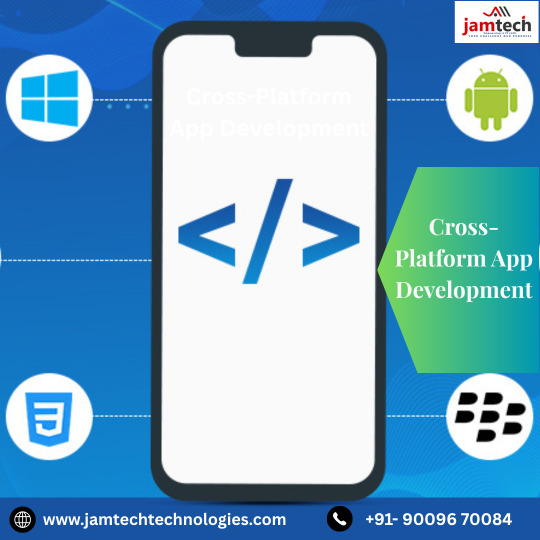
With rapid technological advancements, the future of cross-platform app development is set to transform how developers build, deploy, and maintain mobile and web applications. This article explores the evolving landscape, key trends, and the long-term benefits of adopting cross-platform development strategies.
Understanding Cross-Platform App Development
Cross-platform app development refers to the process of building applications that can run on multiple operating systems (primarily Android and iOS) using a single codebase. This approach contrasts with native app development, where separate codebases are required for each platform.
Popular cross-platform frameworks include Flutter, React Native, Xamarin, and Ionic. These tools enable developers to write one set of code and deploy it across multiple platforms, improving efficiency and reducing time-to-market.
Key Trends Shaping the Future
Improved Framework Capabilities Tools like Flutter and React Native continue to evolve, offering near-native performance, extensive UI capabilities, and support for web and desktop applications. This convergence of technologies is making cross-platform development more versatile and powerful.
Integration of AI and Machine Learning Integrating AI-powered features into cross-platform apps is becoming more accessible. Developers can now implement functionalities such as voice recognition, predictive text, and recommendation engines across platforms using common APIs and frameworks.
Increased Adoption of Low-Code/No-Code Platforms Businesses are leveraging low-code tools for mobile app development that support cross-platform capabilities. These platforms empower non-developers to participate in app creation, further accelerating digital transformation.
Focus on Performance Optimization Historically, cross-platform apps were criticized for their limited performance compared to native apps. However, new architectural improvements, such as Flutter’s Dart-based rendering and React Native’s new Fabric architecture, are closing this gap.
Cloud Integration and Backend-as-a-Service (BaaS) Cross-platform developers are increasingly utilizing cloud services and BaaS solutions like Firebase, AWS Amplify, and Azure Mobile Apps to simplify backend management and enhance scalability across platforms.
Benefits of Cross-Platform App Development
Faster Development Time: A shared codebase accelerates development cycles and reduces duplication of effort.
Cost Efficiency: Businesses save on development and maintenance costs by hiring a single team for all platforms.
Wider Reach: Applications can simultaneously target users on iOS, Android, web, and desktop platforms.
Unified User Experience: Cross-platform frameworks support consistent UI design and functionality across devices.
Challenges to Consider
Despite its advantages, cross-platform mobile app development faces challenges such as:
Limited access to some native APIs and features.
Potential performance trade-offs in highly complex or graphics-intensive applications.
Framework learning curves and dependency on community support.
Conclusion
The future of cross-platform app development looks promising, with continuous innovation in frameworks, tools, and practices. Businesses and developers should consider cross-platform strategies to improve development efficiency, reduce costs, and reach broader audiences. As cross-platform development frameworks become more robust, the line between native and cross-platform apps will continue to blur, making this approach increasingly viable for all types of projects.
#CrossPlatformDevelopment#AppDevelopment#MobileAppDevelopment#FlutterDevelopment#ReactNative#HybridAppDevelopment#SoftwareDevelopment#TechInnovation#FutureOfApps#DevCommunity
0 notes